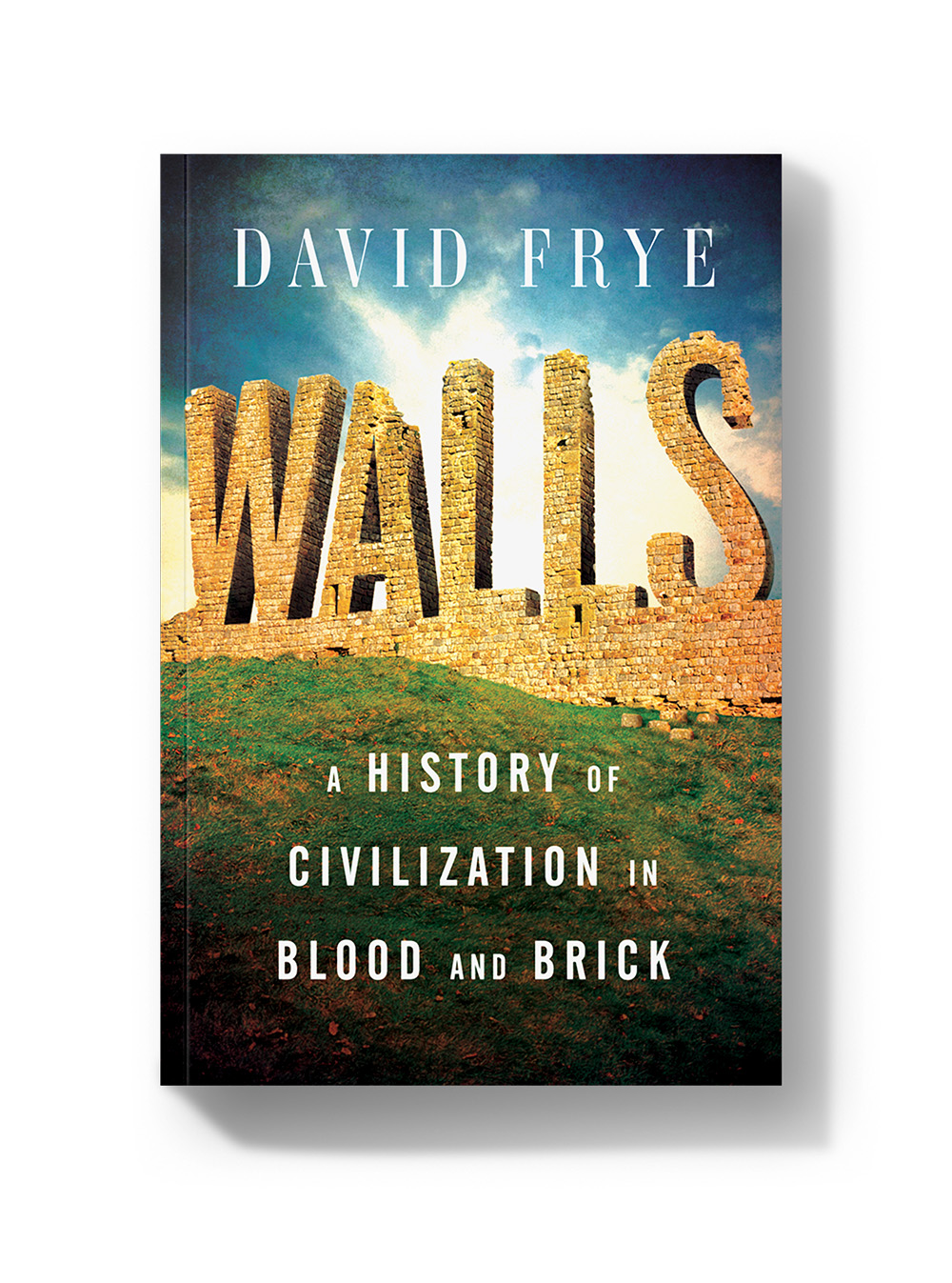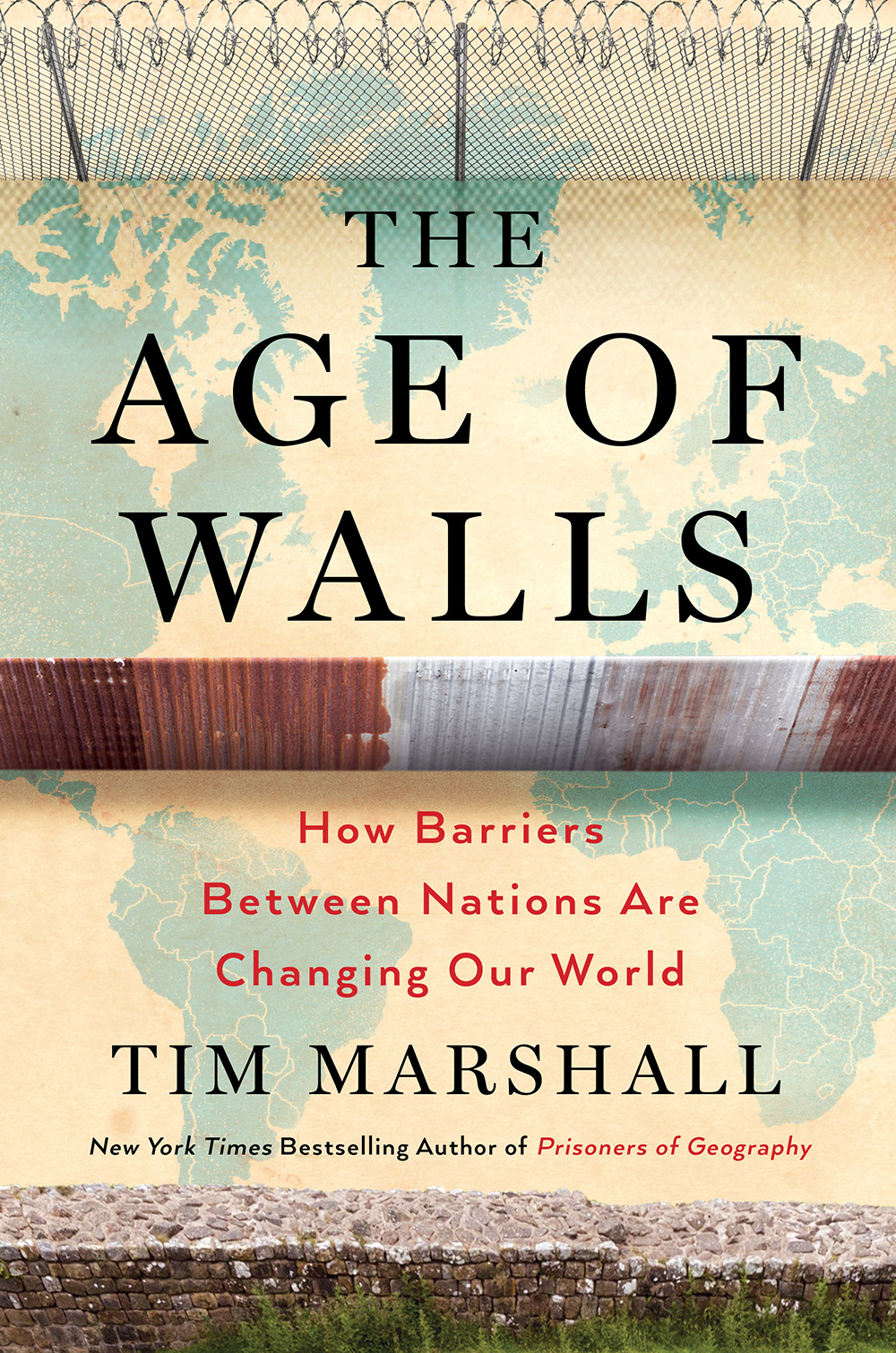
(Photo: Scribner)
Walls: A History of Civilization in Blood and Brick
David Frye
Scribner
The Age of Walls: How Barriers Between Nations Are Changing Our World
Tim Marshall
Scribner
For as long as humans have built settled communities, we have built walls—and in the 21st century we’re building them faster than ever. Construction has begun on more new border walls since 2000 than in the previous five decades combined. Eastern Europe, Africa, the Middle East, the Persian Gulf, Asia: The world has wall mania.
Many Americans on the anti-Trump left seem unaware of this recent history. When Donald Trump vows to replace our massive border fence in Texas with a more massive (and more “beautiful”) border wall, the idea is often dismissed as an impractical fever dream of the Republican base: a bit of retrograde red-meat rhetoric wildly out of step with our irreversibly globalized world. “We can’t hide behind the wall,” Barack Obama told us. Build bridges, not walls, says everyone from the Pope to Black Panther.
Across the world, wall-builders have had other plans. What might it mean, this global proliferation of physical barriers? Two new books hunt for answers. In The Age of Walls: How Barriers Between Nations Are Changing Our World, globetrotting journalist Tim Marshall surveys the walls and borders of the contemporary world, working to untangle the complex relationship between the divisions that we build in our hearts and minds and the divisions we construct in the world. In Walls: A History of Civilization in Blood and Brick, David Frye, a distinguished historian of the ancient world, relies on the archaeological record to discuss walls of the past: Mesopotamian walls, Chinese walls, Roman walls. Both writers have an implicit eye on Big Questions about Human Coexistence on Planet Earth. Why have we spent so much energy on walls? How do walls affect us? Are there better ways to live in unison?
Together, the two books make a strong case for a deep relationship between walls and fear. Fear that “they”—the armies of other nations; nomadic barbarians roaming the steppe; impoverished international refugees—are coming to steal or destroy what “we” have: our crops, our wealth, our community, our way of life.
Whoever “they” were in a given historical society, walls promised to keep them out. But it was a promise no wall could keep for long. This is not to say that no wall has ever succeeded in repelling a single person of the type it was designed to—rather that, time and again, walls have been stymied by the ingenuity and determination of people with other plans. The real power of walls, both Frye and Marshall make clear, is how they send a message to the people who live behind them. The threats are out there, says a wall. I recognize them. But you are in here. Safe.
Frye argues that this feeling of safety, however illusory, was key to the development of civilization. Without walls, he claims, every citizen had to be constantly on guard against external threats. With the job of vigilance outsourced to the wall (and, often, to members of the soldier class who manned its turrets), people on the inside could philosophize, cook up mathematical theorems, have political debates, and write plays and poems—including poems that romanticized life on the other side of the wall, beyond the strictures of civilization.

(Photo: Scribner)
But the logic of “us” on this side of the wall versus “them” on the other is not easily contained or controlled, especially in the frequent cases where some of “us” think we have a more authentic claim to belonging than our fellows. Marshall examines how, despite the unifying effects of the Great Wall, China remains a country riven by intense divisions of ethnicity and wealth. This arrangement should sound familiar: America has been building and expanding fences along the border with Mexico since the 1990s, but these structures have done little to alleviate rifts along lines of race and class in our own country. It is no coincidence that the same time period has seen an explosion of gated communities within America. Fear tends to breed more fear, which barriers first assuage, then perpetuate.
The Berlin Wall looms large in both Frye and Marshall’s accounts. In the West, Cold War politics made the wall into a symbol of the weakness and evils of communism; its dismantling occasioned jubilant celebration of the open, harmonious world of the future. Walls and Age of Walls frame this wave of Western anti-wall sentiment as a historical anomaly—one that couldn’t last long. In the aftermath of the Cold War, the world became more accommodating than ever to the fierce currents of capitalism, increasing global prosperity overall but also causing inequality to spike. At the same time, people have fled their nation-states, pushed out by regional consequences of global forces like war, climate change, and the unpredictable flow of capital. Across the West, our refugee neighbors are showing up at our doors, insisting with the very fact of their presence that our fates have become irrevocably enmeshed.
Both Frye and Marshall flirt heavily with essentially deterministic views of history: People split themselves into groups and crave security, walls speak to those cravings, we’ve always built them, and we always will, even if they never do what we ask of them for long. There is surely some degree of truth in this. It is hard to imagine a world without enforced boundaries of any kind. But reading history by using artifacts of division as your main guideposts makes it easy to see ever-proliferating divisions as inevitable. Division and fear have always been a part of the human story, yes—but so too have attempts at bridging divisions and building trust. A fuller reckoning with our walls might have featured leaders throughout history who pursued other paths to national unity or security, and those individual citizens who, in rejecting the logic of the fortress, sought to make the world a bit less fearful and a bit less deadly. Today, the border agents patrolling South Texas may be more militarized and aggressive than ever, but there are also Americans showing up to help the migrants, armed with water, compassion, and law degrees: a human anti-wall. Like walls, coalitions of this type don’t always succeed, or even last for long. But, like walls, they sometimes change lives, make or redefine nations, and shape history nonetheless.





